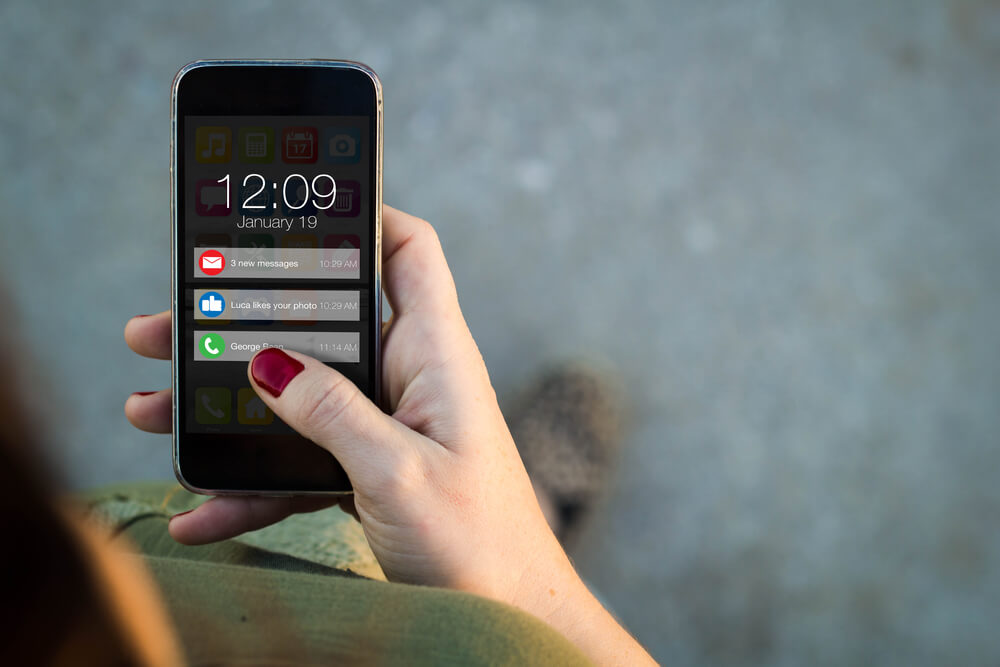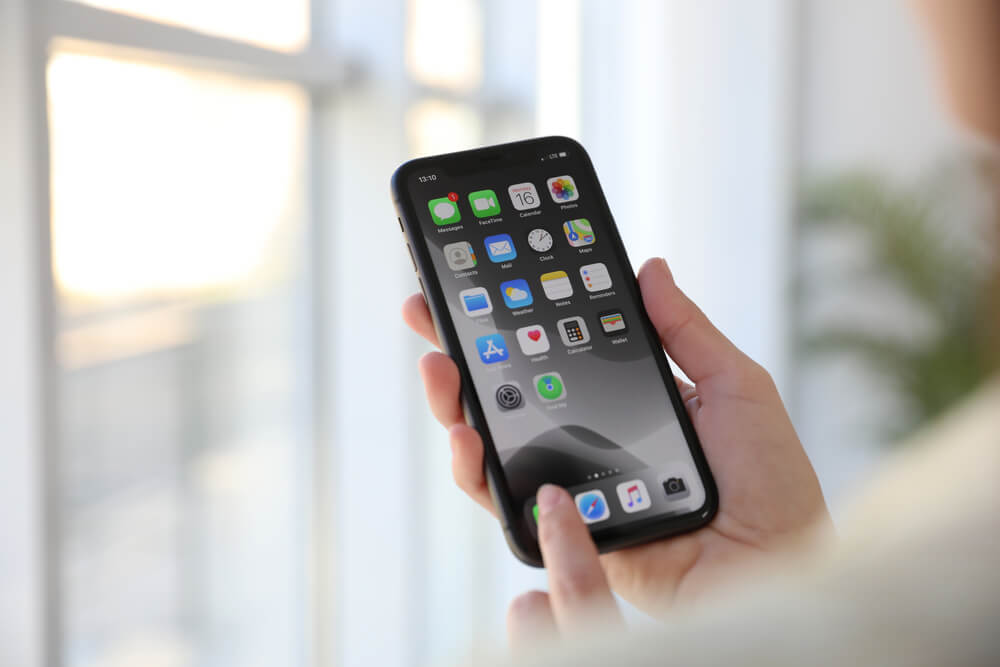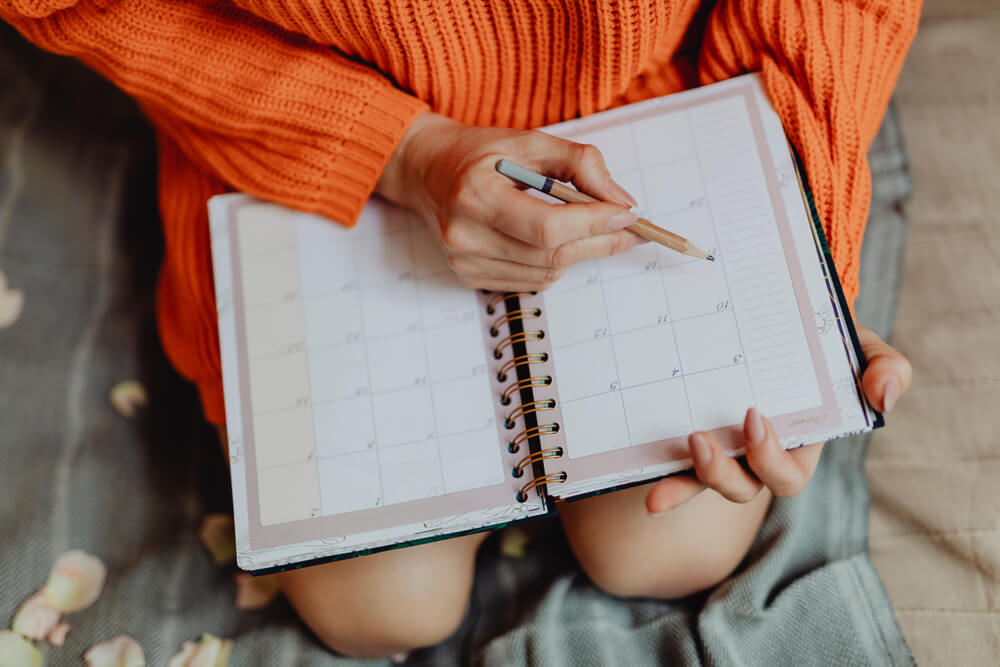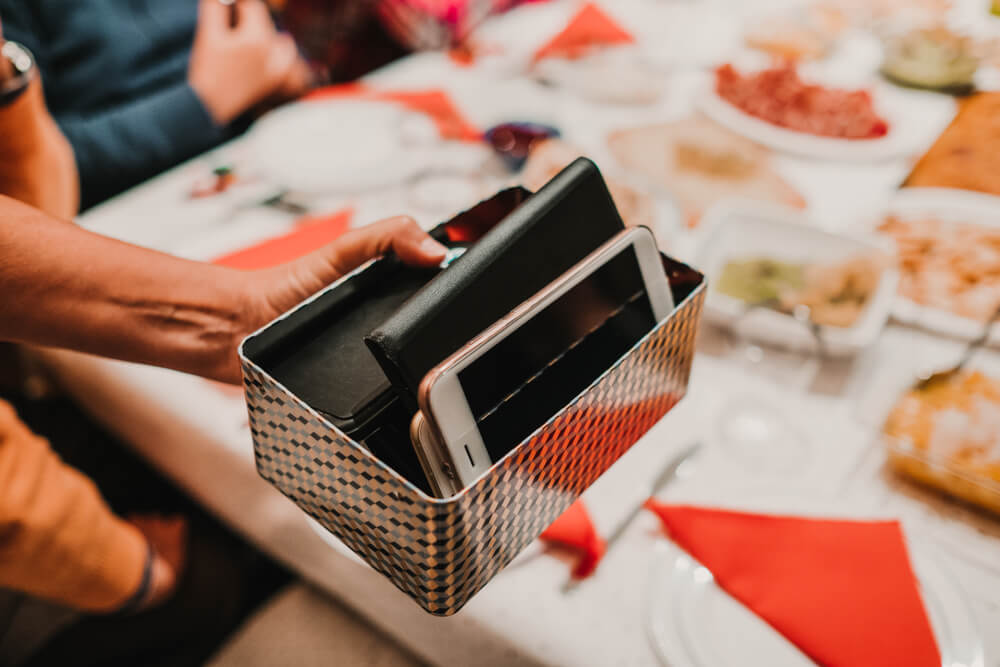Lifestyle
9 Tips for a Successful Digital Detox
Do you usually check your phone as soon as you wake up? Or maybe you find yourself scrolling through social media late at night when you can’t sleep?
If your screen has started to dominate your life, then it may be time to take a little break. Yes, this may be far easier said than done, but even a short digital detox can really have its benefits. You’ll soon be experiencing:
- Stronger and more stable mental health
- Increased brain function
- Better quality sleep at night
- An improved posture
- Less stress
- Enhanced mindfulness
A digital detox can be as minimal or as full-on as you want it to be. Whether you simply cut back on how often you use technology daily, or try to go completely without your screen for a set period of time, here are nine tips to ensure that you are able to successfully pull off your digital detox.
Turn Off Notifications

If you’re going for a full-on digital detox, then chances are you won’t be checking your phone at all. However, if you want to take things slowly, then turning off notifications is a good way to start.
Did you know that smartphone users receive, on average, 63.5 alerts each and every day? Even more shocking is that it doesn’t matter whether or not a phone is on silent mode, these alerts tend to be viewed within just a few minutes.
This may seem like a high figure, but when you consider the fact that people generally check their phones about 47 times a day, it becomes more believable.
The easiest way to get around this is by turning off notifications, which pretty much every device allows you to do. This enables you to get back control of your energy and time – it really will give you such a feeling of empowerment and freedom.
Keep Your Phone Out of Reach
While so many people have gotten into the habit of checking their phones first thing in the morning and last thing at night, a significant number of those people also recognize that this is an unhealthy habit, and one that they want to break.
If you’ve found yourself feeling anxious after going for a short amount of time without your phone, then this tip is one that will be especially helpful for you.
It may sound simple, but “out of sight, out of mind” really does apply in this case – simply keep your phone out of reach, somewhere where you cannot see it.
This could mean making your bedroom a phone-free zone, or leaving your work phone at the office at the end of the day, rather than bringing it home. Either way, make sure that you have something to replace your phone with to occupy your mind, whether this may be a book, a magazine, or some music.
Rearrange Your Home Screen

No matter how much you limit yourself, chances are that you will still need to check your phone once in a while, either for work or for checking up on loved ones.
There’s no problem with this – after all, phones do serve several useful purposes in life. The problem arises when you end up distracted – after making that important phone call, a social media app may catch your eye, causing you to then spend the next hour scrolling through your newsfeed.
One way to avoid doing this is by simply rearranging your home screen. You can usually choose which apps you want to have on your home screen, and the best way to go is having none at all.
You can then put a few key apps onto the second page, before moving the rest into folders on the third.
This will prevent you from subconsciously clicking on all of those apps each time you use your phone, ensuring that you only tap on something when you actually need it.
Want to take things a little further?
Try deleting certain apps instead. This may seem like a drastic step, but deleting some of your social media apps makes it much more inconvenient to waste time checking them on your phone through the day. Instead, you can set yourself a certain amount of time per week for checking social media, either re-downloading the app each time or simply logging on to the desktop version.
Go Black and White
This is another tip that may seem overly simple at first, but it really does make a huge difference…
One of the reasons why smartphones are so addictive is because of all of the bright colors on the screen. As animals, humans find bright colors extremely appealing – they stimulate the brain and constantly attract attention, making it no surprise that many find it difficult to tear their eyes away from their phones once they’ve really gotten into something.
Changing the settings on your phone to make everything black and white will also make everything seem so much less appealing. Your brain won’t find your screen quite as stimulating, meaning that you will soon stop constantly checking your phone out of habit.
Of course, just about everyone involved in app design knows how attention-grabbing bright colors are. Many of the big brands out there will even be working closely with neuroscientists, to ensure that all of their apps and other digital products are as bright and eye-catching as possible.
This also means that companies who produce smartphones try to deter people from turning their screens black and white, so it could take a little bit of navigation through your phone’s settings in order to work out how to do this. However, it can be done, so don’t give up if you can’t see it straight off. A quick Google search will give you step-by-step instructions, no matter which device you happen to be using.
If you still can’t figure it out, there are apps out there that can do the same but with a bit more fine-tuning. The Go Gray appunderstands that color on your screen is sometimes important, such as when you’re using a map to navigate or are using your phone for photography. The app allows you to place certain other apps onto a white list, meaning that you will still be able to view these in color. Everything else will be black and white.
Find Something Else to Do With Your Time

Many people refer to their devices as a distraction, but what are they actually distracting you from?
Granted, during the day, constantly checking your phone or emails can lead to a decrease in attention, focus, and productivity, as you should be getting on with your work instead, but what about in the evenings?
Many people now dedicate a significant amount of their spare time to their devices – it’s not unusual for it to now be considered normal to spend an hour or two in the evenings catching up on all of the gossip on social media.
However much you try to change your habits, a digital detox is extremely difficult to do unless you have something else to occupy your time with.
If you used to enjoy certain hobbies back in the day, try picking these up again, or have a go at variations of your childhood favorites. You could also pamper yourself – treat yourself to a few beauty treatments, cook yourself a delicious meal, read a good book – the options are endless! There is so much to do out there that does not involve a screen – it may just take a bit of time for you to rediscover how much fun these things are.
Buy an Old-Fashioned Alarm Clock
One excuse that many give as to why they need their phones right by their bed, often as close to their pillow as possible, is because of its alarm.
Yes, the alarm function on your phone may be useful when it comes to getting you up on time in the mornings, but it also means that your phone is the first thing that you see each day. Once you turn that alarm off, chances are that you check messages, social media, or any other notifications that you may have (unless you’ve followed the earlier tip of turning off notifications!).
Setting the tone for a digital detox at the start of the day is important, which is why a good move to make would be swapping your smartphone alarm for an old-fashioned alarm clock. This will still wake you up in the mornings, but without offering up the other distractions that your smartphone would.
Consider Alternatives for Your Most Used Apps

People survived just fine for centuries without smartphones, meaning that no matter how much you may depend on your phone now, it’s still completely possible to go without for a while.
This tip follows on from the one above about buying yourself an old-fashioned alarm clock…
In addition to an old-fashioned alarm clock, try using “real-life” alternatives to some of the other apps you most frequently use.
For example, if the calendar app is something you regularly use, try switching to a paper day planner instead. Your Kindle can be replaced with real books, while those who check their phone for the time should consider a wrist watch instead. It goes without saying that an actual camera can replace your phone’s camera, while old-fashioned cards and letters are fantastic for communicating with loved ones, and will likely be appreciated so much more than a tag on social media.
Ask Friends and Family for Help
A digital detox can definitely be difficult, which is why it always helps to have friends and family on-hand to provide assistance.
This could be as simple as informing your loved ones of your digital detox intentions, so that they know that they could be in for a wait if they have sent you a message and are expecting a reply.
Handing your phone over to a friend for a few hours, or even a full day, can also help you to resist the temptation to continuously check it. Find something else to do and return for your phone a while later – chances are that you will find this experience extremely refreshing!
After explaining your reasons for wanting to do a digital detox, your friends and family will likely be more than happy to support you. If you all happen to be out for a meal, request that everyone keeps their phones out of sight – not only will this help you to resist the temptation to check your own, but it will also result in a more enjoyable meal where everyone at the table is fully engaged.
Plus, you never know, you may find that you have a friend or a family member who also wants to give a digital detox a try. It’s so much easier when you have a partner in crime for this, as you will both be able to motivate each other. You will also be able to keep an eye out to ensure that the other does not subconsciously reach for their phone at any point during the day.
The One Screen Rule
Ever find yourself watching TV while also scrolling through your smartphone?
This is pretty common, but it’s definitely not doing you any favors.
One way to change this is by setting a one screen rule in your household, meaning that people can only be using one screen at a time. If you are watching TV, put your phone out of reach. Or, if you want to send a few messages, turn the TV off.
This may not seem like it would have much of an effect, but it really does help to cut back on digital over-exposure, which is what often leads to feelings of restlessness and anxiety.
You may think that you don’t need a digital detox, but, in this day and age, just about everyone would benefit from less screen time. You may not be able to recognize the advantages to this just yet, but once you’ve given a few of these tips a try, you’ll soon realize just how empowering a digital detox can be.

